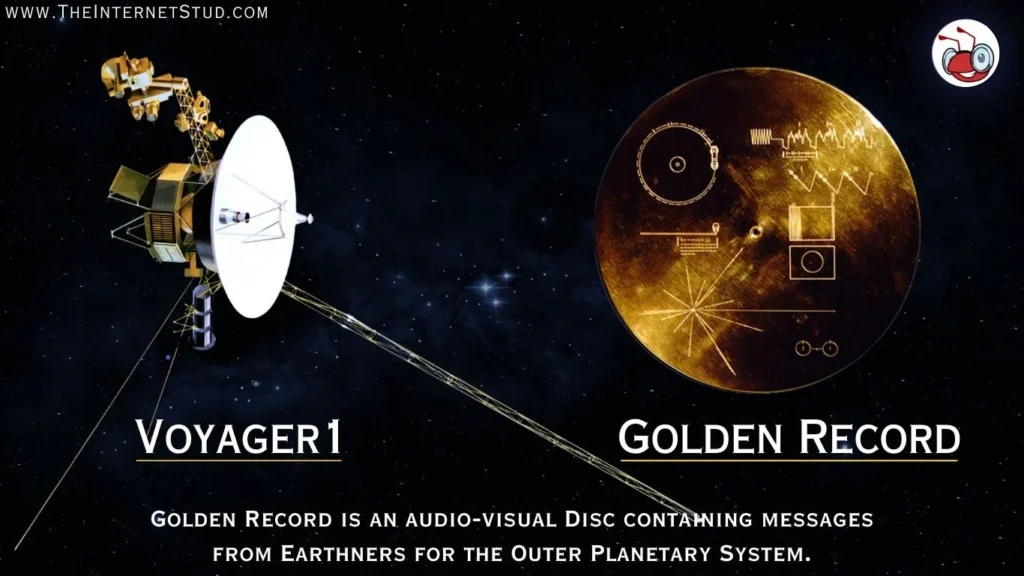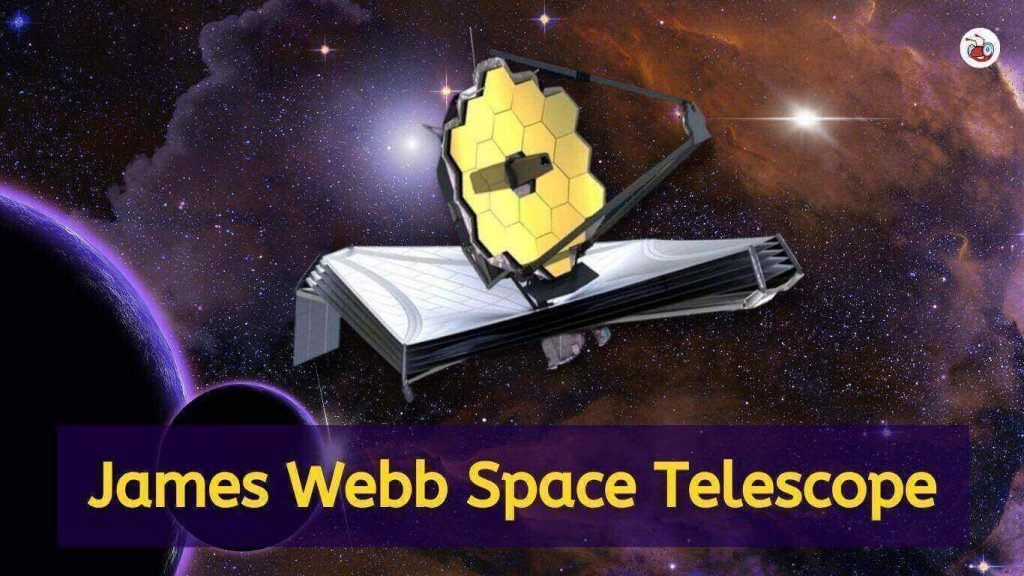We humans are quite unable to find if there is another life in this universe but we are never behind in making efforts. Different space agencies of different countries in the world are making every possible effort. Today I will share about one such attempt that humans have made, The Voyager 1 Mission, there is the Voyager 2 mission as well but we will talk about it in another write-up.
So here I will share thorough details regarding Voyager 1 Mission including the voyager 1 location, voyager 1 distance from Earth, voyager 1 speed, voyager 1 last photo, voyager 1 launch date, voyager 1 aim, voyager 1 budget, voyager 1 book, voyager 1 blue dot, voyager 1 cost, voyager 1 captured images, voyager 1 energy source, voyager 1 facts, and many more.
Table of Contents
So let’s start with general trivia of the Voyager 1 Mission and then unfold all the threads connected to this mission.
Voyager 1 Mission Introduction
Voyager 1 Mission was part of the Voyager program planned and executed by NASA that included 2 almost similar probes named Voyager 1 and Voyager 2. Both missions were launched in 1977 at a difference of 16 days. In this write-up, we will mainly focus on the Voyager 1 Mission.

The story of Voyager 1 is very interesting and no matter how much one knows about the Voyager mission, it always remains a curiosity in us. You might be wondering how? You will get the answer to this later in this article. So the main aim of the Voyager Program was to study the outer Solar System and the Interstellar part of space where no human-made probe is reached till then.
Voyager 1 was not sent directly to cross the heliosphere and explore the Interstellar space area but it has made flyby to many crucial celestial bodies of our Solar System including Jupiter, Saturn, and Titan (Saturn’s largest moon), and then continued its journey to explore the Outer Solar Space.
Voyager 1 Launch Date
The preparation for the Voyager Mission was started in the early 1970s and it was launched in 1977. During the preparation and designing of the probes, there were several changes made to make the probes more effective and potent to survive in the extreme circumstances of the space areas.
The Voyager 1 launch date was 5 September 1977, right 16 days after the Voyager 2 launch (the Voyager 2 probe was the extended part of the Voyager program). This program is the longest space program ever attempted by humans with a total duration of 46 years, 3 Months, and 4 Days (as of 9 December 2023) and it is expected to continue till 2025, after that, all the instruments of the probe will be turned off as the battery will no longer be able to supply enough energy to the instruments.
Voyager 1 Launch Site
Voyager 1 Mission was operated by the National Aeronautics & Space Agency and Jet Propulsion Laboratory. This mission was launched from Launch Complex 41 at the Cape Canaveral Air Force Station. Whether Voyager 1 was launched 16 days after Voyager 2, it reached Jupiter and Saturn before Voyager 2 due to its short trajectory.
Voyager 1 Mission Timeline
Here I am sharing the Voyager 1 mission timeline in a tabular manner so that you will be able to figure out the whole timeline of the mission along with the tasks completed by the probe.
| Date | Events |
| 5 September 1977 | Spacecraft launched at 12:56:00 UTC |
| 10 December 1977 | Entered asteroid belt |
| 19 December 1977 | Voyager 1 overtakes Voyager 2 |
| 8 September 1978 | Exited asteroid belt |
| 6 January 1979 | Start Jupiter observation phase |
| 5 Match 1979 | Encounter with the Jovian system (Amalthea, Io, Europa, Ganymede, Callisto flyby and phase ends on 13 April 1979) |
| 12 November 1980 | Encounter with the Saturnian system (Titan, Tethys, Mimas, Enceladus, Rhea, Hyperion flybys and phase ends on 14 November 1980) |
| 14 November 1980 | Begin Extended Mission |
| Date | Events |
| 14 February 1990 | Final images of the Voyager program acquired by Voyager 1 to create the Solar System Family Portrait |
| 17 February 1998 | Voyager 1 overtakes Pioneer 10 as the most distant spacecraft from the Sun, at 69.419 AU. Voyager 1 is moving away from the Sun at over 1 AU per year faster than Pioneer 10 |
| 17 December 2004 | Passed the termination shock at 94 AU and entered the heliosheath |
| 2 February 2007 | Terminated plasma subsystem operations |
| 11 April 2007 | Terminated plasma subsystem heater |
| 16 January 2008 | Terminated planetary radio astronomy experiment operations |
| 25 August 2012 | Crossed the heliopause at 121 AU and entered interstellar space |
| 7 July 2014 | Further confirmation probe is in interstellar space |
| 19 April 2016 | Terminated Ultraviolet Spectrometer operations |
| 28 November 2017 | “Trajectory correction maneuver” (TCM) thrusters are tested in their first use since November 1980 |
| 14 July 2022 | Voyager 1 has reached a distance of 23.381 billion km (14.528 billion mi; 156.29 AU) from Earth and 23.483 billion km (14.592 billion mi; 156.97 AU) from the Sun. |
| 25 November 2023 | Voyager 1 has traveled 161.844 AU (24.2 billion km or 15.0 billion mi) from Earth |
Voyager 1 Last Photo
Voyager 1 last photo was named “The Family Portrait”, it was a picture of our Solar system including most of the planets in a single image. There are a few spacecraft that could make such photographs of our Solar system including Voyager 1, Voyager 2, and New Horizons.

Voyager 1 last photo, “The Family Portrait” was a final series of 60 images captured by the probe, and after that cameras for the rest of Voyager 1 Mission were shut down in order to power management due to scientists’ beliefs that there would be nothing to watch through cameras in the dark space.
Voyager 1 Spacecraft Instruments
Of course, there were numerous instruments attached to the Voyager 1 probe, but here I will share the names and intro of Voyager 1 spacecraft instruments that were integrated to conduct scientific studies in space regarding a lot of matters that I have shared ahead.
So let’s start listing up those 11 important Voyager 1 Spacecraft Instruments one by one.
| Instrument Name | Status | Description | Principal Investigator |
| Imaging Science System | Disabled | Narrow and wide-angle camera systems to capture images of the target objects | Bradford Smith / University of Arizona |
| Radio Science System | Disabled | Utilized the telecommunications system of the Voyager spacecraft to determine the physical properties of planets and satellites (ionospheres, atmospheres, masses, gravity fields, densities) and the amount and size distribution of material in Saturn’s rings and the ring dimensions | G. Tyler / Stanford University |
| Infrared Interferometer Spectrometer | Disables | Investigates both global and local energy balance and atmospheric composition. Vertical temperature profiles are also obtained from the planets and satellites as well as the composition, thermal properties, and size of particles in Saturn’s rings. | Rudolf Hanel / NASA Goddard Space Flight Center |
| Ultraviolet Spectrometer | Disables | Utilized to measure atmospheric properties and radiation | A. Broadfoot / University of Southern California |
| Triaxial Fluxgate Magnetometer | Active | Designed to investigate the magnetic fields of Jupiter and Saturn, the interaction of the solar wind with the magnetospheres of these planets, and the magnetic field of interplanetary space out to the boundary between the solar wind and the magnetic field of interstellar space. | Norman F. Ness / NASA Goddard Space Flight Center |
| Plasma Spectrometer | Defective | Investigates the microscopic properties of the plasma ions and measures electrons in the energy range from 5 eV to 1 keV. | John Richardson / MIT |
| Low Energy Charged Particle Instrument | Active | Measures the differential in energy fluxes and angular distributions of ions, electrons, and the differential in energy ion composition. | Stamatios Krimigis / JHU / APL / University of Maryland |
| Cosmic Ray System | Active | Determines the origin and acceleration process, life history, and dynamic contribution of interstellar cosmic rays, the nucleosynthesis of elements in cosmic-ray sources, the behavior of cosmic rays in the interplanetary medium, and the trapped planetary energetic-particle environment. | Edward Stone / Caltech / NASA Goddard Space Flight Center |
| Planetary Radio Astronomy Investigation | Disabled | Utilizes a sweep-frequency radio receiver to study the radio-emission signals from Jupiter and Saturn. | James Warwick / University of Colorado |
| Photopolarimeter System | Disabled | Utilized a telescope with a polarizer to gather information on surface texture and composition of Jupiter and Saturn and information on atmospheric scattering properties and density for both planets. | Arthur Lane / JPL |
| Plasma Wave Subsystem | Active | Provides continuous, sheath-independent measurements of the electron-density profiles at Jupiter and Saturn as well as basic information on local wave–particle interaction, useful in studying the magnetospheres. | William Kurth / University of Iowa |
These are the total 11 Voyager 1 Spacecraft instruments that were attached to the probe during its launch but currently, not all of them are active, some of them are turned off in order to save the energy of the spacecraft. As of now, a total of 4 instruments are active and eventually, these 4 will also be turned off one by one, and Voyager 1 will remain going forward in the universe.
Voyager 1 Location
It has been more than 46 years since Voyager 1 said Goodbye to Earthians, so it has gone so far, even beyond the grasp of its investors and controllers. We can not determine the exact Voyager 1 location but it is in the constellation of Ophiuchus. And as of 25th November 2023, Voyager 1 distance from Earth is 161.844 AU (24.2 billion km or 15.0 billion mi).
Voyager 1 Budget
As we know already, the Voyager Program initially had the plan to launch one probe that would conduct exclusive flyby studies of inter-planetary bodies while taking the advantage of alignment of 2 gas giants Jupiter and Saturn, and 2 ice giants Uranus and Neptune.
But from the execution purpose, it would so complex and expensive mission for a single spacecraft to fly by so many celestial bodies of the Solar System and then cross the heliosphere. To simplify the Voyager Mission, 2 spacecraft were prepared and launched at a distance of 16 days from each other.
Hence the cost was also cut and the mission also became easy to accomplish with Voyager 1 and Voyager 2. This is not only the Voyager 1 Budget but also the whole Voyager Program – $865 million.
With this budget engineers designed 2 Voyager probes and wrote the history as no man-made object has traveled so far till now except Voyager 1 and Voyager 2.
Voyager 1 Golden Record
Voyager 1 and Voyager 2 both the spacecraft are carrying a golden-plated audio-visual disc with so many messages from Earthners. This Voyager 1 Golden record is sent with the hope if this spacecraft reaches an intelligent lifeform of another planetary system then they could receive messages from us.

This Voyager 1 Golden record includes photos of Earth and lifeforms on Earth, a range of scientific information, spoken greetings from people such as the Secretary-General of the United Nations and the President of the United States, and a medley, “Sounds of Earth”, that includes the sounds of whales, a baby crying, waves breaking on a shore, and a collection of music including works by Wolfgang Amadeus Mozart, Blind Willie Johnson, Chuck Berry, and Valya Balkanska. This Disc also contains greetings in 55 different languages.
What Is Voyager 1 Blue Dot?
During the early stage of the Voyager mission, the spacecraft captured images of major planets in close-up color style, these photos were regularly documented by print and electronic media outlets. One of the best photos out of these captures was of the Earth as a Pale Blue Dot taken by the Voyager 1 in 1990.
This photo of Earth as a blue dot became popular after Carl Sagan statement – “Consider again that dot. That’s here. That’s home. That’s us….The Earth is a very small stage in a vast cosmic arena…. To my mind, there is perhaps no better demonstration of the folly of human conceits than this distant image of our tiny world. To me, it underscores our responsibility to deal more kindly and compassionately with one another and to preserve and cherish that pale blue dot, the only home we’ve ever known.”
Want To Read: About James Webb Space Telescope – World’s Most Powerful Space Telescope
Voyager 1 Remaining Life Span
The Voyager 1 Mission was launched in 1977 and in 2017, NASA successfully fired all the Trajectory Correction Maneuver thrusters in order to keep point spacecraft’s antenna toward Earth so that communication can be established. As per the reports, after this fire for the first time since 1980, Voyager 1 will be able to keep transmit data for 2 to 3 more years.
In order to power management, Scientists have also shut down 7 instruments till now and only 4 are active that will also be turned off one by one. Engineers are expecting to keep operating at least one instrument of the probe till 2025. So there is only 1 to 2 years Voyager 1 remaining life span and we all have to Good Bye this genius probe.
Read Also: About Chandrayaan 3 Mission – Launch Date, Budget, & Everything You Need Know
Voyager 1 Facts
In this Voyager 1 Mission details write-up, I have tried my best to provide you with all the crucial data related to the mission, so you must have read up on these facts about Voyager 1 as well. Here I am sharing some interesting and unknown Voyager 1 Facts, so keep reading.
- Voyager 1 is the first man-made object to cross the heliosphere and enter Interstellar Space.
- Voyager 1 was launched 16 days after Voyager 2 but reached Jupiter and Saturn before Voyager 2 due to its short trajectory.
- For increasing radiation shielding on the surface of the Voyager 1, kitchen-grade aluminum foil was applied.
- The electrical power used to conduct the Generators used in Voyager 1 is generated by plutonium-238.
- The committee formed for the content selection for the Voyager 1 Golden Record was chaired by Carl Sagan.
- Carl Sagan popularized the Voyager 1 Blue Dot photograph of Earth.
- NASA Scientists had a choice between Pluto and Titan (Saturn’s largest moon) for a flyby and they chose Titan as this moon is known for having a substantial atmosphere.
- As of 2023, it took nearly 22 hours to transmit data from Voyager 1 spacecraft to Earth.
- Voyager 1 communication system was designed in a way that it could stay connected with Earth even after crossing the Solar System and expectedly in a few years, it will go out of NASA’s Deep Space Network and communication will never be established again.
- The year 2025 is going to be one of the toughest years for NASA scientists as the Voyager Mission will no longer be able to continue after 2025.
Must Read: Aditya L1 Mission Updates – Objectives, Payloads, & Everything You Should Know
Final Words
In this Voyager 1 Mission, we have thoroughly talked about the mission and as I have promised you that your curiosity about this mission will increase after reading this write-up, like what the studies Voyager 1 has made, how it is operating now, what will happen with Voyager 1 probe after communication lost, will any other intelligent life be able to receive Voyager 1 Golden Record, will they be able to crack the information NASA has fed in the Voyager 1 Golden record, and many more.
You can keep tracking further information about the Voyager 1 Mission on the internet and hope this write-up includes Voyager 1 launch date, Voyager 1 launch site, Voyager 1 mission timeline, Voyager 1 location, Voyager 1 distance from Earth, Voyager 1 budget, Voyager 1 spacecraft instruments, Voyager 1 Golden record, Voyager 1 blue dot, Voyager 1 remaining life span, Voyager 1 facts, etc. were a useful and informative enough content for you. Thanks for reading.
FAQs
Where is Voyager 1 now?
Voyager 1 is in the constellation of Ophiuchus. As of 25th November 2023, Voyager 1 distance from Earth is 161.844 AU (24.2 billion km or 15.0 billion mi).
Is Voyager 1 still in contact?
Voyager 1 is still in contact with Earth but scientists are expecting this connection till 2025 only because its radioisotope thermoelectric generators (RTGs) will no longer be able to supply energy to the instruments attached to the probe, the scientists have to shut down all the instruments but the Voyager 1 will keep floating in the universe.
Can Voyager 1 still take pictures?
Voyager 1 took its last photo on 14 February 1990, it is called “The Family Portrait”, after this photo, cameras were shut down for power management.





